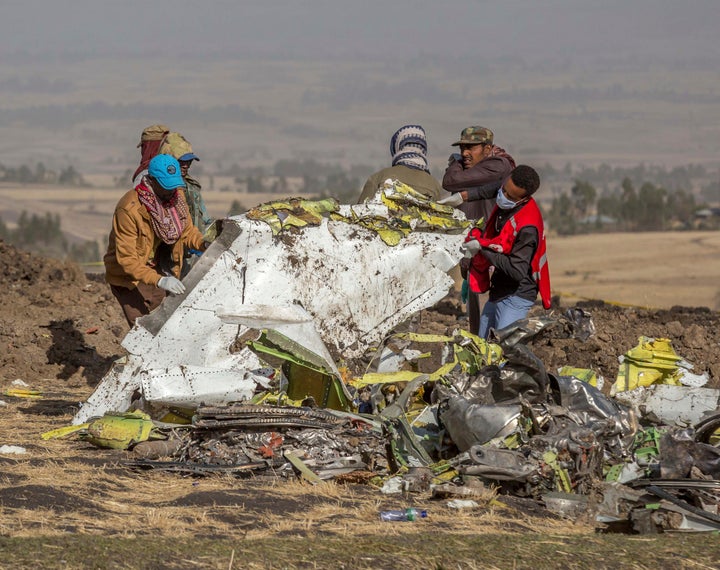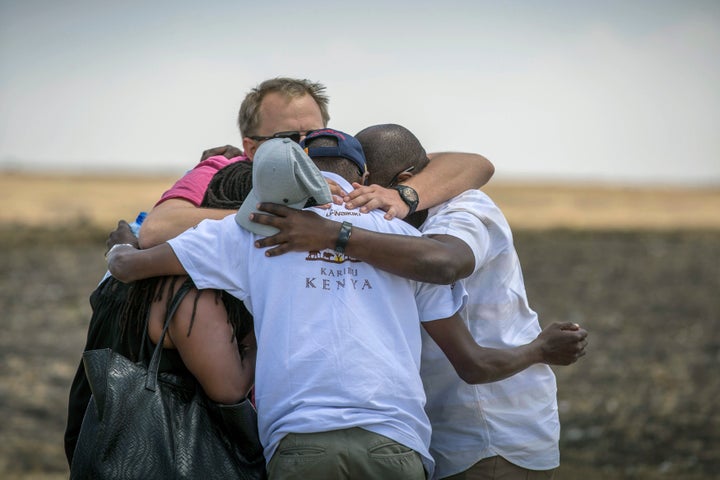SEATTLE/PARIS (Reuters) ― Boeing anti-stall software on a doomed Ethiopian Airlines jet re-engaged as many as four times after the crew initially turned it off due to suspect data from an airflow sensor, two people familiar with the matter said.
It was not immediately clear whether the crew had chosen to re-deploy the system, which pushes the nose of the Boeing 737 MAX downwards, but one person with knowledge of the matter said investigators were studying the possibility that the software had kicked in again without human intervention.
A Boeing spokeswoman declined to comment. Ethiopian investigators were not immediately available for comment.
The Wall Street Journal reported Wednesday that the Ethiopian Airlines pilots had initially followed Boeing’s emergency procedures but later deviated from them as they tried to regain control of the plane.
The Journal report, citing unidentified people briefed on the matter, said the pilots had initially shut off the MCAS anti-stall system that was pushing the airplane’s nose down shortly after it took off from Addis Ababa.
The pilots then cranked a manual wheel in an attempt to stabilize the plane, the report said, but they eventually decided to restore power to the usual electric trim on their control yokes, likely because the manual attempt did not achieve the desired results.

Boeing’s MCAS software is at the center of investigations into both the Ethiopian Airlines crash last month and a Lion Air accident in Indonesia in October that together killed nearly 350 people.
People familiar with the investigation have said the anti-stall software ― which automatically pushes the aircraft’s nose down to guard against a loss of lift ― was activated by erroneous “angle of attack” data from a single sensor.
The investigation has now turned toward how MCAS was initially disabled by pilots following an emergency checklist procedure but then appeared to repeatedly start working again before the jet plunged to the ground, the people said.
A directive issued after the Indonesian crash instructed pilots to use cut-out switches to disengage the system in the event of problems and leave it switched off.
Doing so does not shut down the MCAS system completely but severs an electrical link between the software and aircraft systems, a person familiar with the technology said.
Investigators are studying whether there are any conditions under which MCAS could re-activate itself automatically, without the pilots reversing the cut-out maneuver. Boeing is in the midst of upgrading the software while adding extra training.
A preliminary report is expected within days.

The pilots maneuvered the plane back upwards at least two times before hitting the stabilizer cut-out switches to disable the system, the other person familiar with the matter said.
However, initial flight data indicates the aircraft was not in a “neutral” attitude when pilots hit the stabilizer cutout switches to disable the MCAS system, the person added, making the situation harder to manage.
After the pilots turned off MCAS, the airplane over the next few minutes gained roughly 2,000 feet, but dived into the ground after the renewed succession of nose-down inputs from MCAS.
None of the parties involved in the investigation was available for comment.
Reporting by Eric M. Johnson in Seattle, Tim Hepher in Paris, Jamie Freed in Singapore, Editing by Laurence Frost and Richard Lough
Credit: Source link